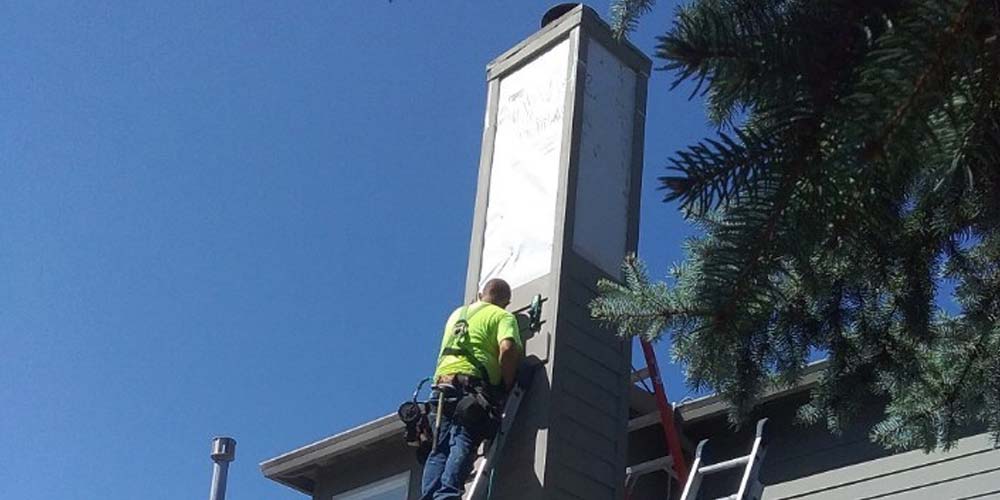2 MIN READ
Chimney Chases Are Generally Not Integrated To The Home
Homeowners often ask why the rest of their home is holding up, and the chimney chase looks ten years older and shows signs of dry rot. One of the more common areas for exterior repairs are on and around wood chimney chases. This article reveals the common issues that cause chimney chase damage, how to prevent them from occurring, and how to repair them.
The main issue with chimney chases is that they are often added to the home last, and not constructed to the same standard as the rest of the house. They are often missing flashing, weather-resistant barriers, and sometimes the siding is nailed right to the framing. Due to these issues, it’s easy for water to enter the structure and cause dry rot to form.
Roof To Chimney Chase Connection
Roof connections are a common area for water intrusion within any material. Still, a chimney chase’s typical long horizontal width offers little to no slope for water to drain from the roof, causing water to sit and accumulate. Hence, the reason why you often don’t notice the effect of dry rot near the top. It would be best if you had adequate flashing to prevent water from seeping into the roof connection chase. The solution to this common issue is to install a roofing cricket. A roofing cricket is a buildup slope that forces the water to shed from the area.
Ground-level Chimney Chase Issues
Since chimney chases are installed after the main home is constructed, the chase’s bottom usually does not have a foundation underneath. Because of this, the chimney chase requires an air gap from the ground. However, homeowners commonly add plants and fill dirt around the siding of the chase. The additional landscaping causes moisture to wick up into the wood material of the chase and dry rot. The solution to these issues is straightforward: remove any dirt and landscaping at least 6 inches from the chase to prevent the water pathway.
Chimney Chase Maintenance Issues
Due to the height of the chimney chase, many routine maintenance issues are missed during an inspection. This is another common issue with chimney chases. Failing paint and caulking can let water into the structure and cause damage. Unfortunately, since this issue is at the top of the home, water damage and dry rot can now spread all the way down the chimney chase and walls. So when you decide to paint your home or are doing touch up painting, make sure to include your chimney chase.
Chimney Cap Maintenance Issues
The chimney cap is a metal piece covering the top of the chase and has an outlet to expel the exhaust. Over time, the caps break apart and rust, allowing rainwater to sit on the top of the chimney and run down the chase’s wood material. Repairing a chimney cap problem usually requires the installation of a new cap.
If you have noticed any of these issues and would like to resolve the problem permanently, contact us for a consultation. We’ve repaired hundreds of damaged chimney chases and can walk you through the repair process.


